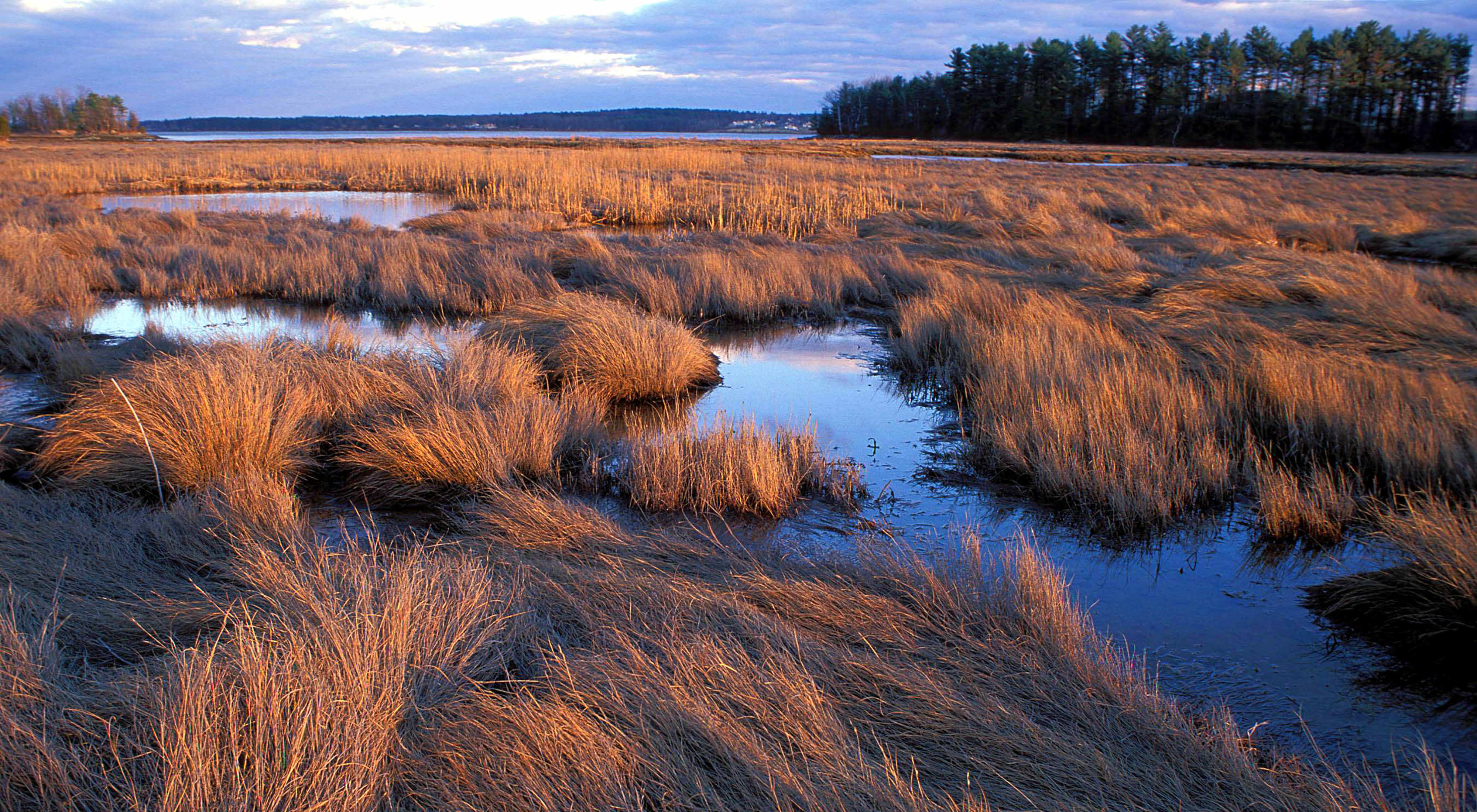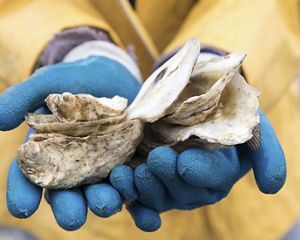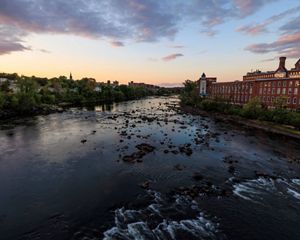
Dawn on the Marsh Dawn on the salt marsh at The Nature Conservancy's Lubberland Creek Preserve in Newmarket, New Hampshire. © Jerry and Marcy Monkman/EcoPhotography
Stretching from inland forests to the Atlantic coastline, New Hampshire's coastal watershed is home to rich habitats and vital natural resources that benefit both wildlife and local communities. These ecosystems provide clean water, flood protection, and support for aquaculture, fisheries and recreation, making them essential for both environmental health and human well-being.
Our dedicated conservation efforts aim to safeguard these precious natural resources against the pressures of development and climate change. Through innovative restoration techniques, strategic partnerships, and community engagement, we are committed to enhancing the resilience of our coastal watershed and the people and nature that call it home. Join us in our mission to ensure a thriving future for New Hampshire's coastal waters and the communities that depend on them.
Our Coastal Watershed Goals
Rising seas, stronger storms, and habitat loss threaten both wildlife and communities. That’s why we’re working to restore vital habitats, protect people and nature from climate impacts, and build partnerships
-
Build Smarter Restoration Models
We’re working to keep New Hampshire’s coastal habitats healthy and resilient—places like oyster reefs and salt marshes that protect wildlife and benefit our communities. Our goal is to create sustainable ways to restore these habitats, support local shellfish farming, and make sure these vital areas thrive for generations to come.
-
Protect People and Wildlife
Nature can help us tackle big challenges like flooding and climate change. We’re partnering with communities to use nature-based solutions that reduce flood risks, strengthen infrastructure, and keep wildlife moving safely through the landscape. These efforts not only protect homes and roads—they also boost local economies and improve quality of life.
-
Work Together for Conservation
Conservation works best when we do it together. We’re teaming up with local organizations, community groups, and partners to share resources, support high-impact projects, and build strong networks. By joining forces, we can protect more land, restore more habitats, and create lasting benefits for people and nature.


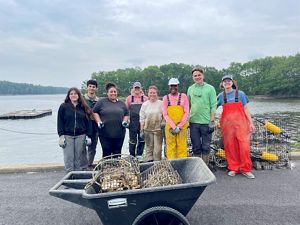
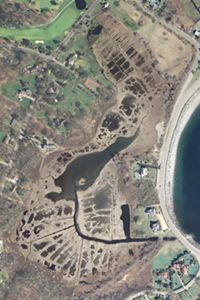
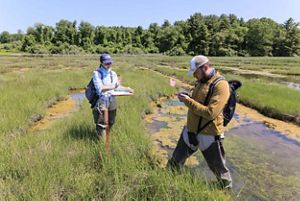
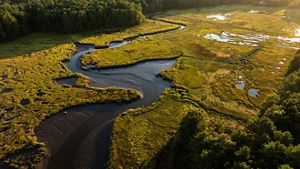
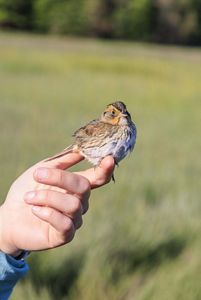

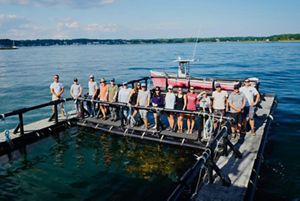


Nature's filters: A single oyster can filter pollutants out of up to four or five liters of water an hour. © The Nature Conservancy

Rebuilding a Reef: The Nature Conservancy's Brianna Group (left) and Steve Weglarz of Cedar Point Oyster Company add oysters to a restoration reef near Nanny Island as part of the Supporting Oys © Jerry Monkman/EcoPhotography

Oyster Success: Staff and volunteers from multiple organizations work together to restore oysters in the Great Bay Estuary. © Kim Arlen/TNC

Like syrup on a waffle: Looking down upon Philbrick Pond and its extensive saltmarsh system: Man-made ditches and berms in the saltmarsh trap water, creating the look of syrup on a waffle. © NH Geospatial Portal

Saltmarsh Research: UNH scientists taking measurements of a salt marsh sparrow nest at The Nature Conservancy's Lubberland Creek Preserve on Great Bay in Newmarket, New Hampshire. © Jerry and Marcy Monkman/EcoPhotography

Lubberland Creek: The saltmarsh at Lubberland Creek Preserve in Newmarket is one of the largest intact saltmarshes in New Hampshire. © Jerry and Marcy Monkman/EcoPhotography

Saltmarsh Sparrow: A UNH scientist holds a salt marsh sparrows that was just banded and outfitted with a gps trasnsmitter at The Nature Conservancy's Lubberland Creek Preserve on Great Bay in Newmarket, New Hampshire. © Jerry and Marcy Monkman/EcoPhotography

Oyster Inspection: Macaulay Bloom gets a closer look at the oyster spat in her grandparent’s oyster cage while her brother, John, watches from the boat in Dover, New Hampshire. July 2017. © Jennifer Emerling

Global Aquaculture: TNC Global Aquaculture staff from around the world meet in New Hampshire for a conference. © Brianna Group/TNC

Oyster Aquaculture: Brian Gennaco, owner of the Virgin Oyster Company, harvests oysters from an oyster bag on his oyster farm in Little Bay in Durham, New Hampshire. © 2020 Jerry and Marcy Monkman/EcoPhotography
Diving Deep on Oyster Restoration
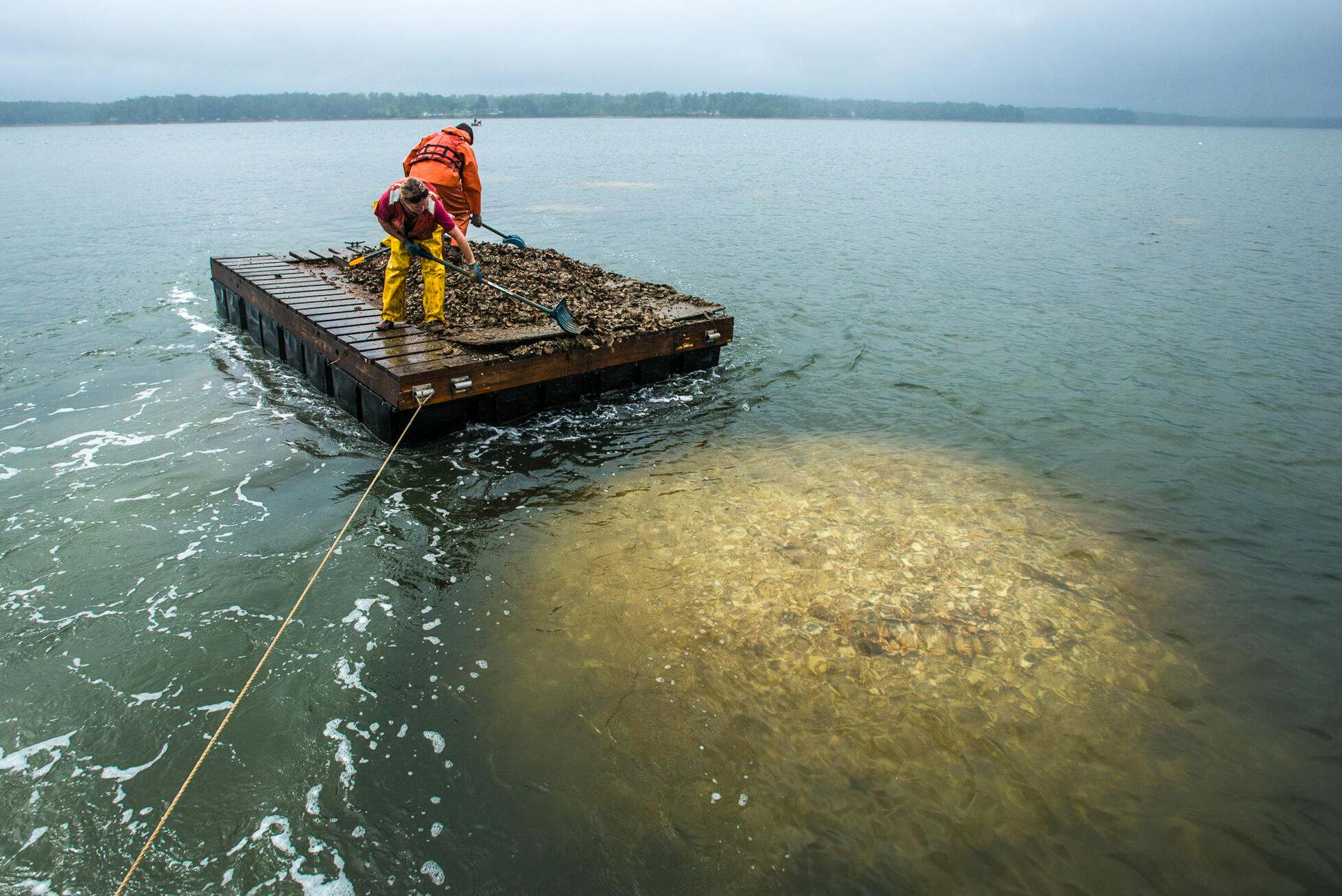
Oyster Restoration
New Hampshire's Great Bay Estuary is a vital and dynamic ecosystem, home to a rich diversity of marine life. Historically, the eastern oyster (Crassostrea virginica) played a crucial role in this estuary, with as many as 1,000 acres of live oyster reef covering the area in the 1970s.
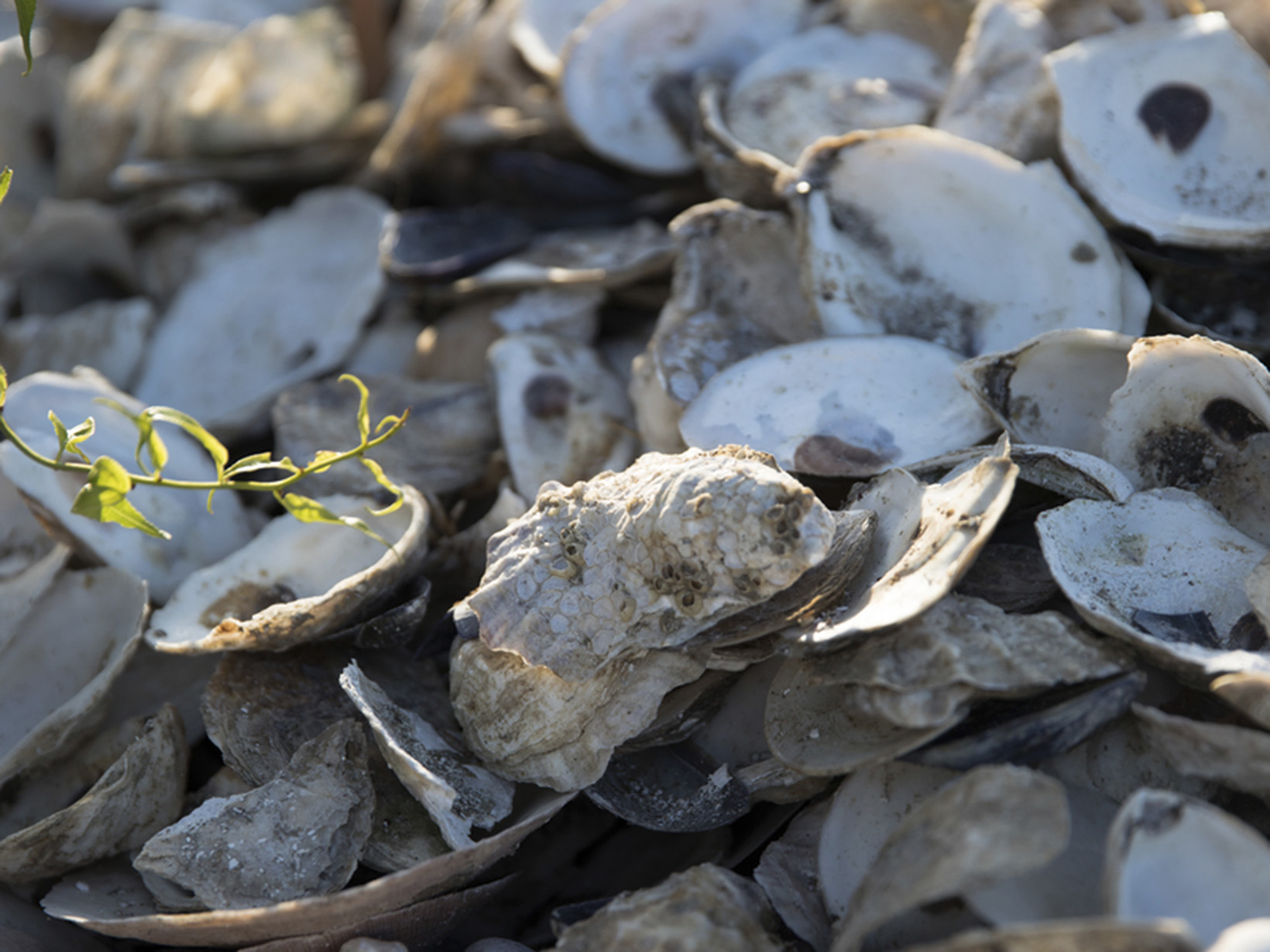
However, over 90% of these oysters were lost due to pollution, historic overharvesting, and disease, leading to significant ecological challenges. Without oysters, Great Bay is lacking the natural filtration capacity to maintain healthy eelgrass beds and fish nurseries as nitrogen and siltation increase.

Oysters are more than just a seafood delicacy; they are ecological powerhouses. An adult oyster can filter up to 50 gallons of water per day, removing excess nutrients and pollutants, which helps improve water quality and clarity.

Oyster reefs also provide essential habitat for a variety of marine species, including fish, crabs, and other invertebrates, supporting biodiversity and the life cycles of many species. Additionally, oysters are vitally important to the local aquaculture industry and economy with farmers raising them to sell to restaurants and seafood distributors.

What We're Doing
The Power of Oyster Restoration
The Nature Conservancy and the University of New Hampshire, together with oyster farmers and other local partners, are working to rebuild degraded oyster reef habitat in the Great Bay Estuary and Piscataqua Region of New Hampshire and Maine. Since 2009, these efforts have restored more than 28 acres of reef and 3.5 million oysters, helping to improve water quality and provide essential habitat for fish and other marine life.
Oysters are an ecological linchpin of the estuary, filtering water and supporting biodiversity. But they’re also a cornerstone of the local aquaculture economy. Through innovative partnerships—like our work with New Hampshire oyster farmers who raise oysters specifically for restoration—we’re demonstrating how conservation and local businesses can work hand-in-hand. By aligning ecological goals with economic opportunity, we’re building a more resilient estuary and a stronger coastal community.
Our approach is rooted in science and community. From the volunteers raising baby oysters off their docks or moorings to the scientists who reconstruct historic reef sites for the juvenile oysters to call home, this work brings together a broad coalition committed to restoring Great Bay’s natural systems for the benefit of people and nature alike.
Explore Our Oyster Program
Restoring New Hampshire's Salt Marshes
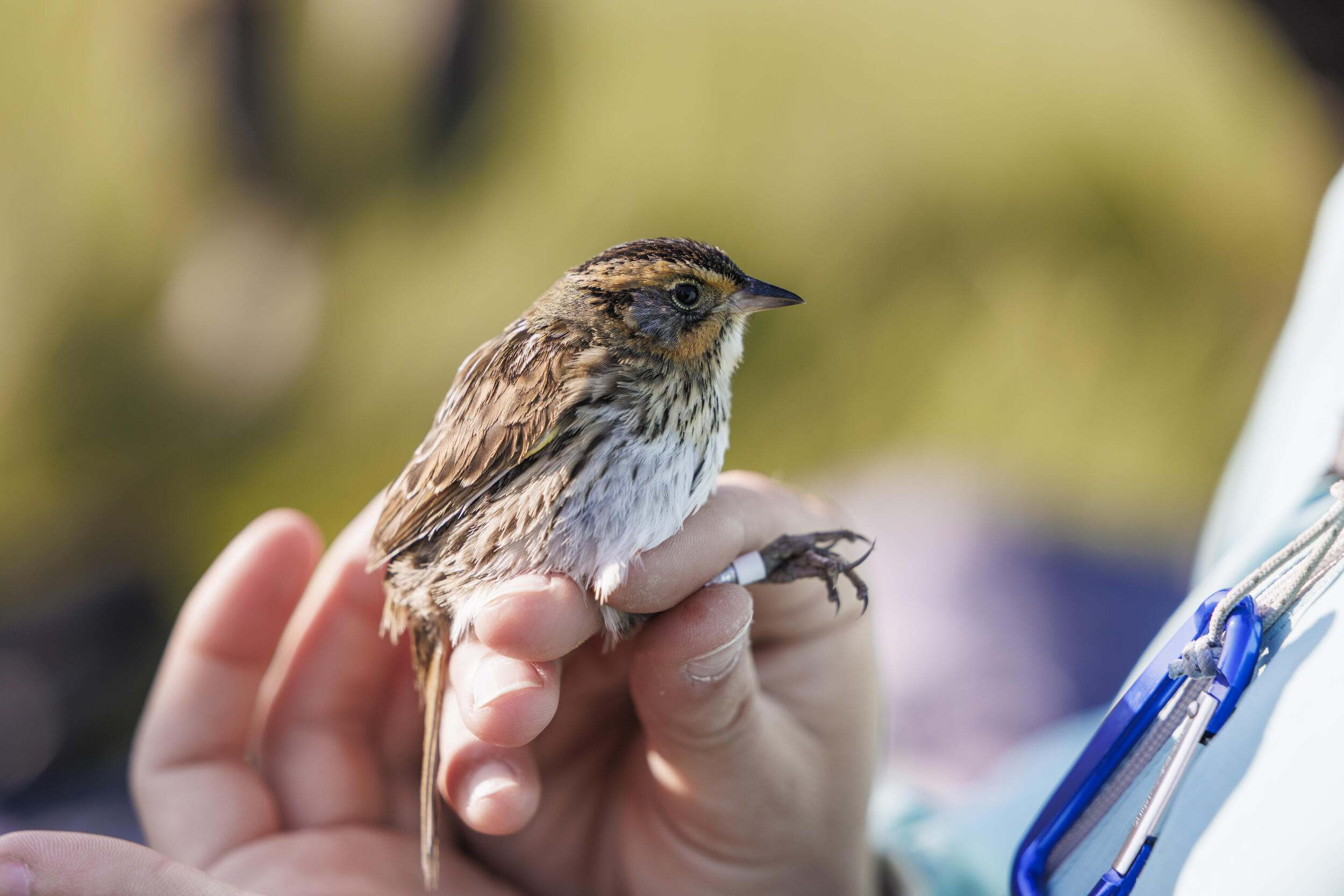
Saltmarsh Research and Restoration
Imagine standing on the edge of New Hampshire’s salt marshes, where the salty ocean breeze mingles with the earthy scent of marshland. These marshes are vital for protecting coastal communities from climate change, acting as natural buffers and providing habitat for uncommon wildlife like the saltmarsh sparrow.

However, rising sea levels are threatening these ecosystems, causing high marsh areas to convert to low marsh and creating "mega-pools" of open water. This loss impacts species diversity, shoreline erosion control and storm surge protection.
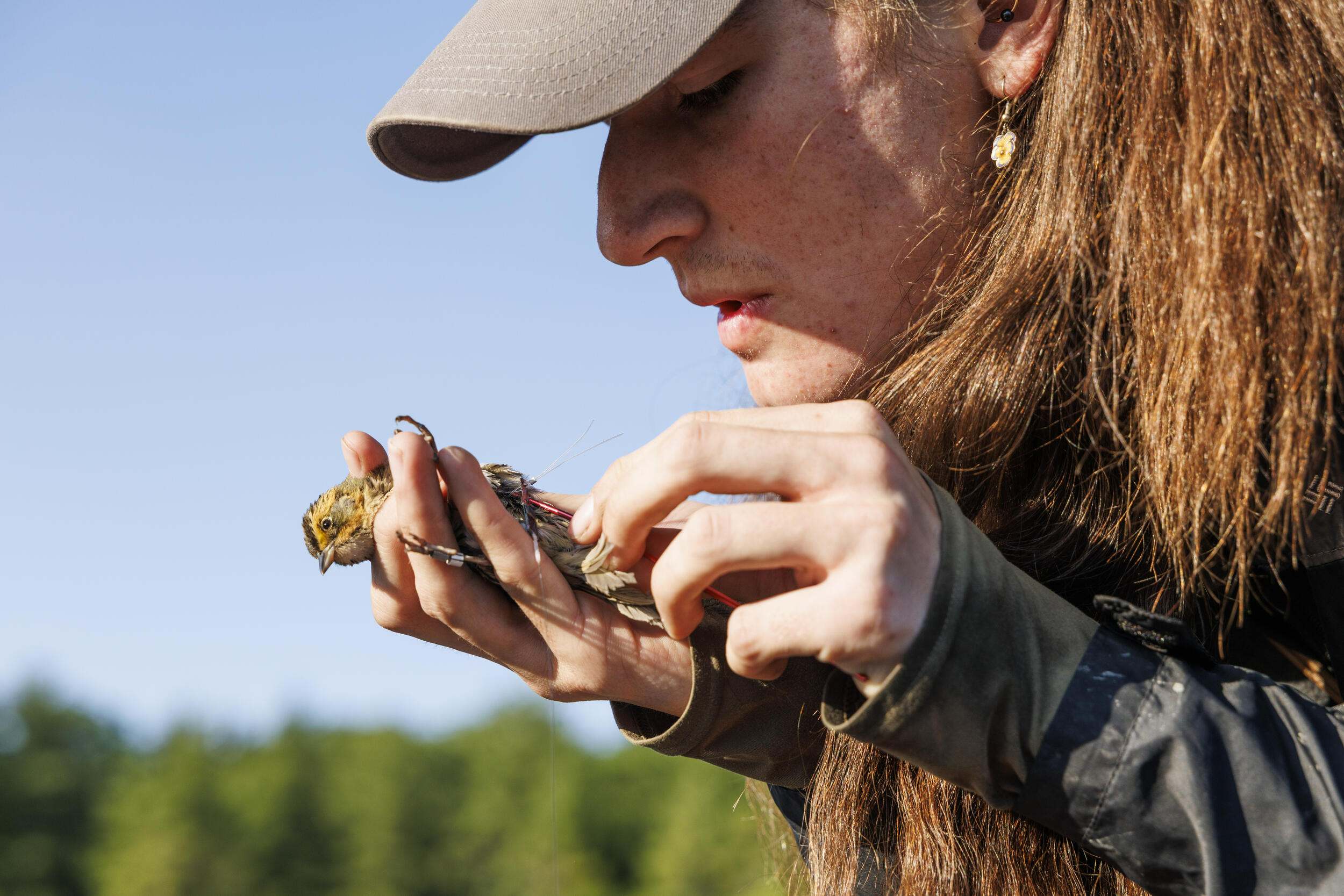
What We're Doing
Research is Key to Sustainable Salt Marshes
New Hampshire's salt marshes are vital for protecting coastal communities from climate change, acting as natural buffers and providing habitat for uncommon wildlife like the saltmarsh sparrow. However, rising sea levels are putting these habitats at risk. It’s normal that low marsh areas are flooded twice daily, and during moon tides, the entire marsh becomes submerged. However, with climate change and sea-level rise, we are experiencing changes to the amount of flooding our marshes experience, resulting in species shifts in the marsh. This loss impacts species diversity, shoreline erosion control and storm surge protection.
To address these challenges, advanced modeling techniques predict future salt marsh persistence and identify migration corridors for protection and restoration. TNC is collaborating with municipalities, state agencies and a wide array of partners to upgrade tidal road-stream crossings to improve tidal flow and marsh health. Key restoration sites like Philbrook Pond and Lubberland Creek Preserve are being developed, with research on saltmarsh sparrows led by the Department of Natural Resources and the Environment at the University of New Hampshire informing future plans. Through these efforts, the conservation community aims to build resilience in New Hampshire’s salt marshes for future generations.
Explore Our Saltmarsh Restoration Work


Working Together for Conservation
Conservation isn’t something we do alone—it’s a shared effort across the entire coastal watershed. By joining forces, we can protect more land, restore more habitats, and create lasting benefits for people and nature. Here’s how collaboration is driving impact:
-
A coalition of more than 40 organizations, including The Nature Conservancy, is working together through Great Bay 2030 to protect clean water, restore habitats, and make our coast resilient to climate change. This initiative focuses on five priorities: stewardship, habitat restoration, water quality, climate adaptation, and land protection—backed by philanthropic support from the New Hampshire Charitable Foundation.
-
7 Rivers to the Coast is a collaboration of more than 20 organizations, working to protect the waterways that flow through New Hampshire and Maine's Great Bay watershed. It's powered by nonprofits, businesses, community groups, local governments, state agencies, and academic institutions.
Each organization is dedicated to protecting our shared waters in different ways, including outreach, education, research, monitoring, environmental advocacy (including the Great Bay Changemaker Program), management, land conservation, and sustainable recreation.
-
The updated NH Coastal Watershed Conservation Plan provides a science-based roadmap for protecting critical lands, wildlife corridors, and water resources across the 52 municipalities in the watershed. Known as "Connect to Protect," the plan helps guide decisions so every acre conserved strengthens flood resilience, clean water, and local farms.
-
Since 1994, the GBRPP has united nonprofits, towns, and state agencies to protect land and support stewardship. Through grants and partnerships, this effort has conserved thousands of acres and funded projects that keep these lands healthy for generations.
-
Local land trusts and community groups are working together to conserve forests, marshes, and shorelines across 52 towns. These lands safeguard wildlife, buffer floods, and provide space for recreation—making our communities stronger and more connected to nature. Conservation tools like “Connect to Protect” maps and New Hampshire Coastal Viewer help ensure strategic and effective land protection.
-
Nature Groupie makes it easy to volunteer for nature. Over 400 conservation organizations in New England post their volunteer experiences on their calendar, providing community members in the seacoast and beyond with opportunities to get hands-on and engage in conservation and stewardship efforts.
-
- Bigger impact through collective action: Coordinated planning and shared funding enable greater land and wildlife protection.
- Community-driven progress: Initiatives like the Oyster Conservationist Volunteer Program and Great Bay Changemakers empower residents to advocate and take local action.
- Sustainable futures: These partnerships not only secure land but also ensure long-term stewardship and ecological resilience.
Want more stories like this?
Sign up for our monthly e-newsletter to get the latest stories, news and updates right to your inbox!
Support Our Work
Your contributions help us continue our conservation work in New Hampshire.



